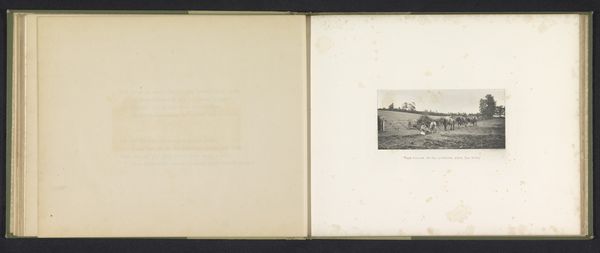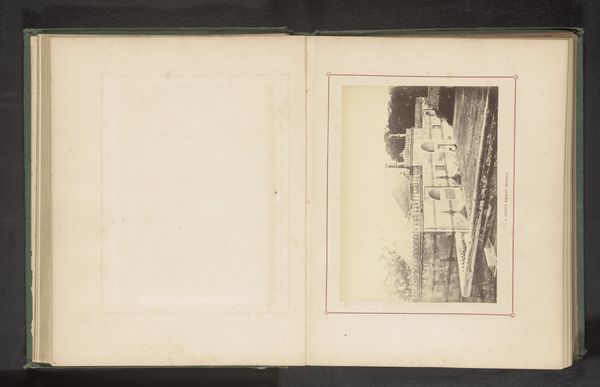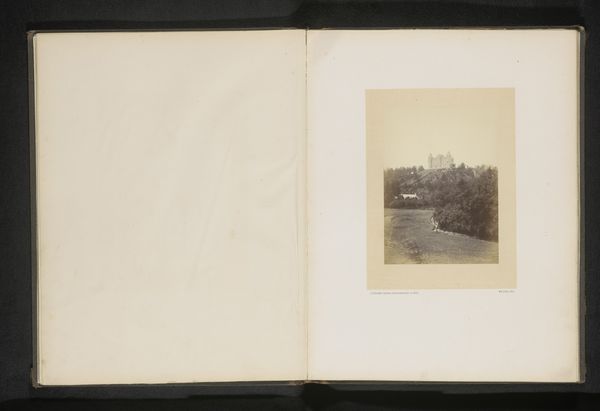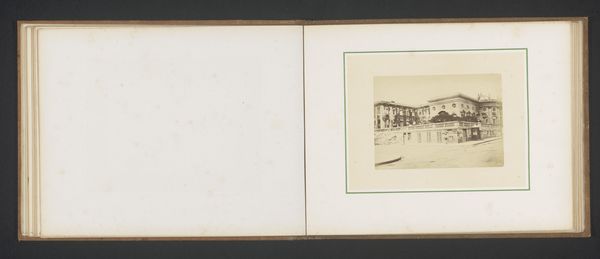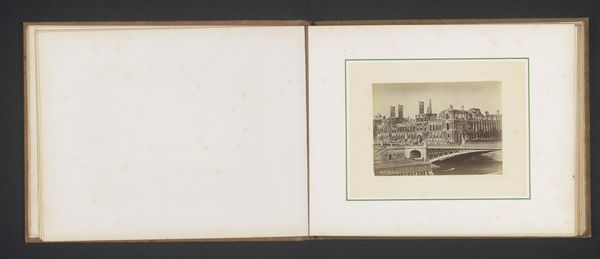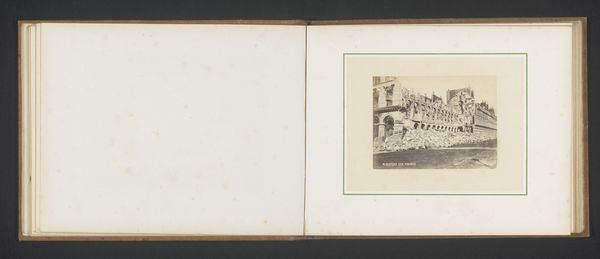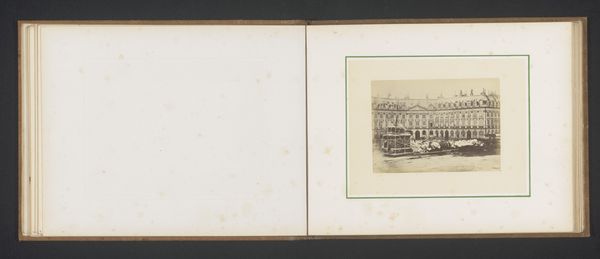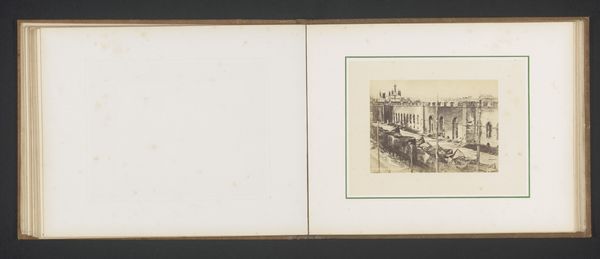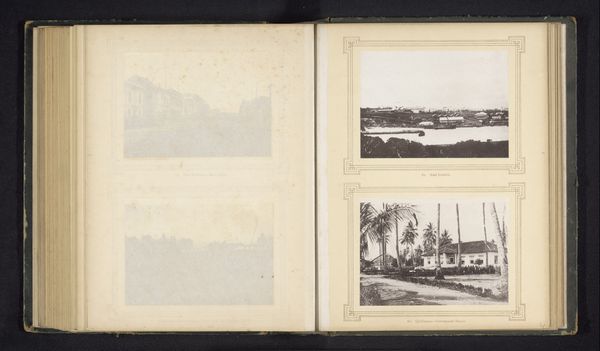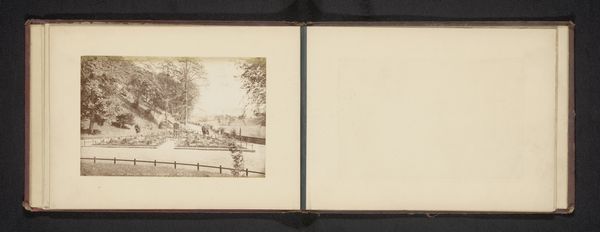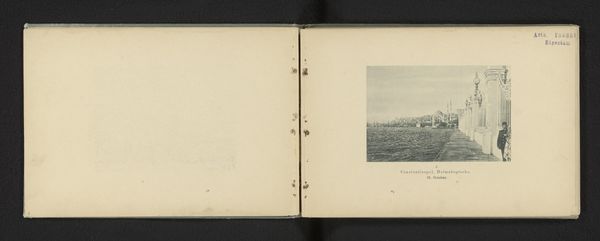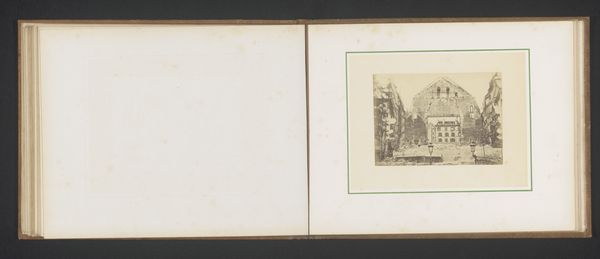
Gezicht op de kazerne post van de Bastille in Parijs met op de achtergrond de Colonne de Juillet, na de brand door de Commune van Parijs 1871
0:00
0:00
Dimensions: height 93 mm, width 129 mm
Copyright: Rijks Museum: Open Domain
Curator: This is a gelatin silver print by P. Loubère, titled "View of the barracks post of the Bastille in Paris with the Colonne de Juillet in the background, after the fire by the Paris Commune," created in 1871. Editor: It feels mournful, doesn’t it? A quiet document of destruction, all pale tones and delicate lines. I’m immediately struck by the stark contrast between the iconic column, which remains standing, and the obvious damage around it. Curator: The column is an incredible symbol of revolutionary change. The July Revolution of 1830. So, this photograph serves as a grim reminder of how even potent symbols are not immune to history's destructive capabilities. The image creates a cultural memory about resilience in the face of political upheaval. Editor: Precisely. Looking closer, one has to wonder what it meant to Loubère, taking this photo just after the Commune was crushed. This isn't a neutral record; it's a carefully framed narrative about power and its consequences. Consider how those boats on the water look like a slow dirge... I imagine the photographer intentionally using those forms. Curator: I notice a romantic sensibility within the framing. This feels like the sublime in ruins, like humanity’s failed hubris. The way the scene is arranged emphasizes a quiet acceptance—or a warning for the future. Is this supposed to warn us away from insurrection? Editor: Or does it immortalize the Communards? Commemorating an audacious but ultimately unsuccessful attempt at radical change. The perspective, the medium itself, seems like an attempt to grapple with a seismic event. We get this tangible record of collective trauma. Curator: Absolutely. Even the choice of black and white photography feels poignant. The sepia tones adds to the sentimentality of the memory being displayed here. Time passing and transforming our symbols... I wonder how Parisians at the time viewed it. Editor: And how it resonates now, right? The photo prompts a dialogue between its historical moment and our contemporary one. Who gets to build monuments, who gets to tear them down, and what stories survive? These are the urgent questions, even now. Curator: Reflecting on the conversation now, I recognize it is essential to perceive and honor the emotional weight of the depicted monuments beyond a simplified symbolic status. Editor: For me, the photo really functions as an enduring mirror, asking us to reckon with power, loss, and the never-ending struggle for liberation.
Comments
No comments
Be the first to comment and join the conversation on the ultimate creative platform.
